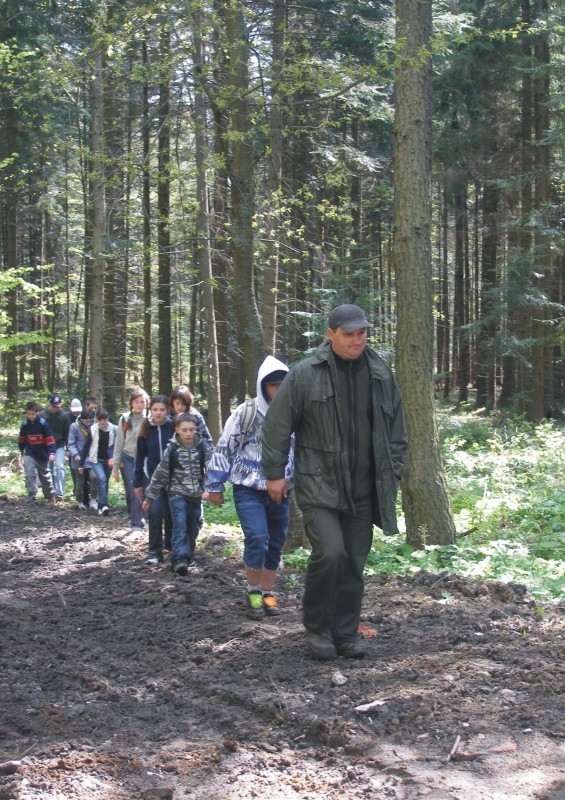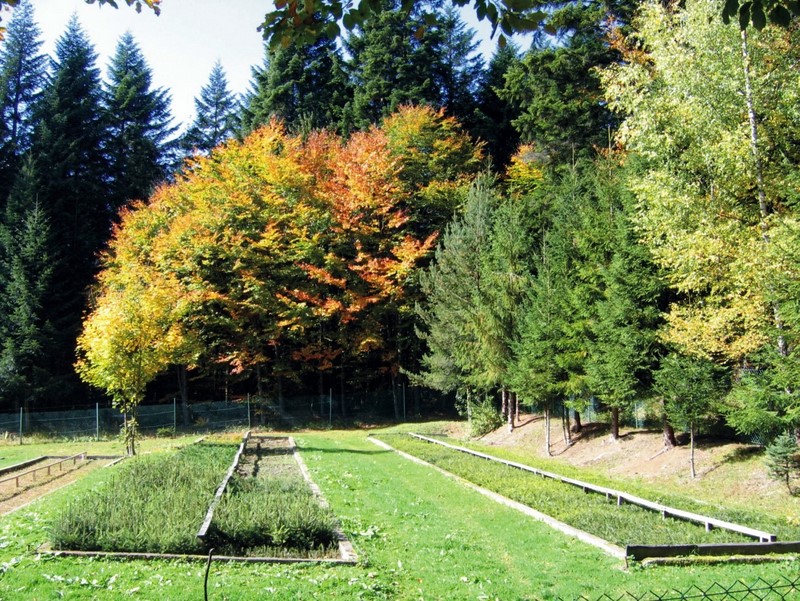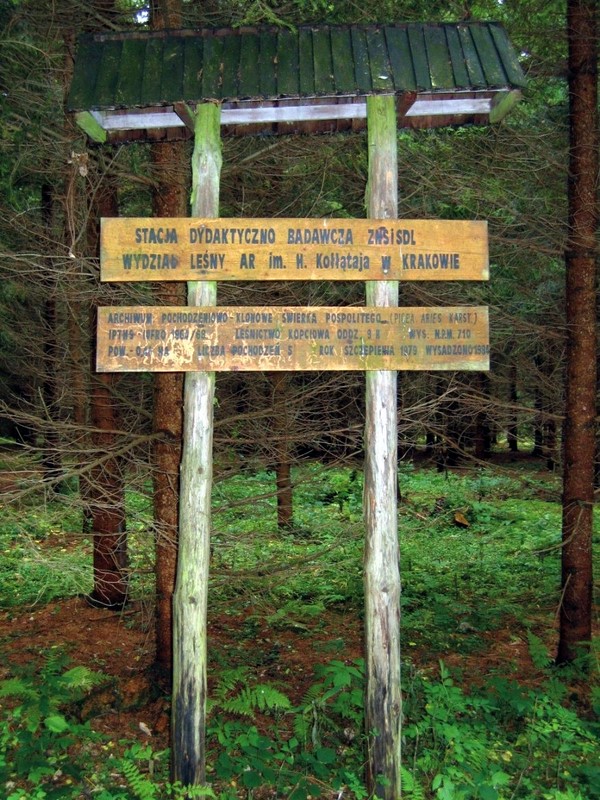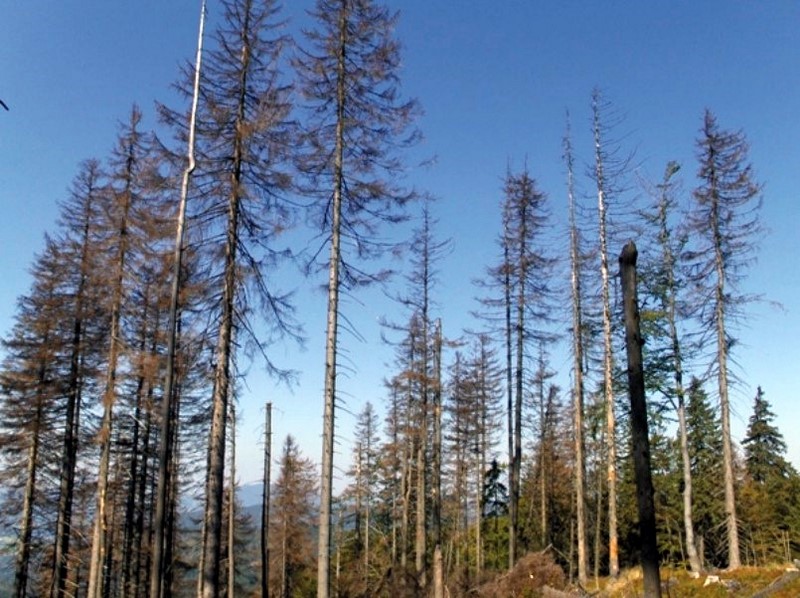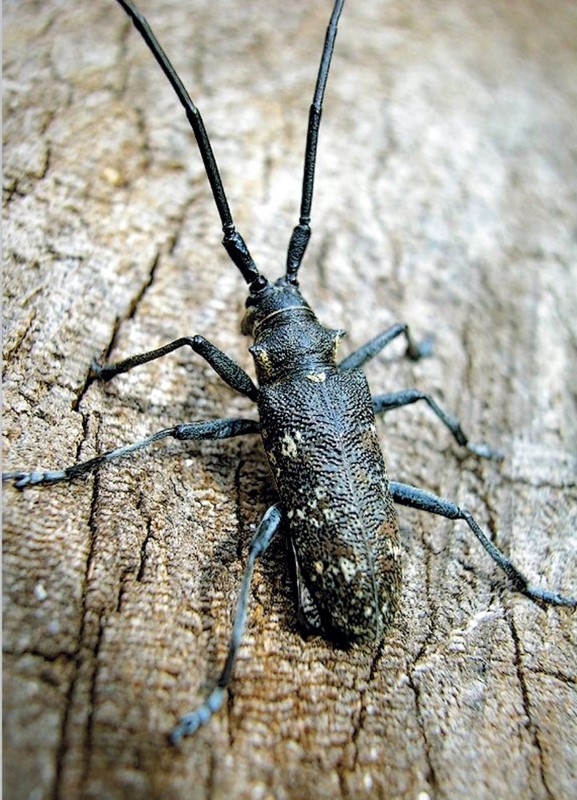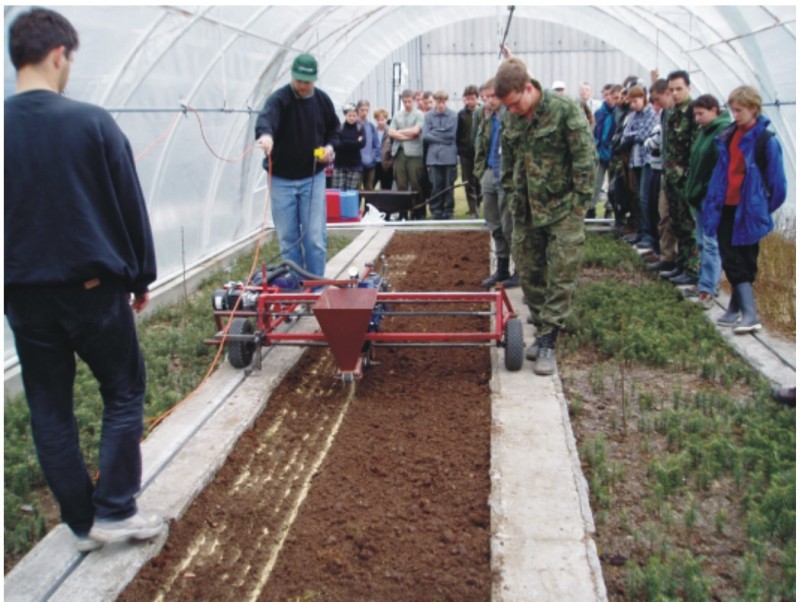The trail is 5,5 km ( 3,42 mi) long and an estimated time for passing is about 3 hours. It consists of 13 stops with the information boards. The route is marked with the characteristic, painted on the tree-trunks pictograms and with direction arrows where the route turns.
Starting from a ‘Forest House’ through forest nursery to the historic stand of fir-trees we get to know the successive stages of mountain forests development and the tasks being done by foresters.
Stop no 1 – AN INFORMATION BOARD
At the end of the car park there is an information board that indicates the place where you are standing, displays the route of the trail and presents the rules concerning walking in the forest.
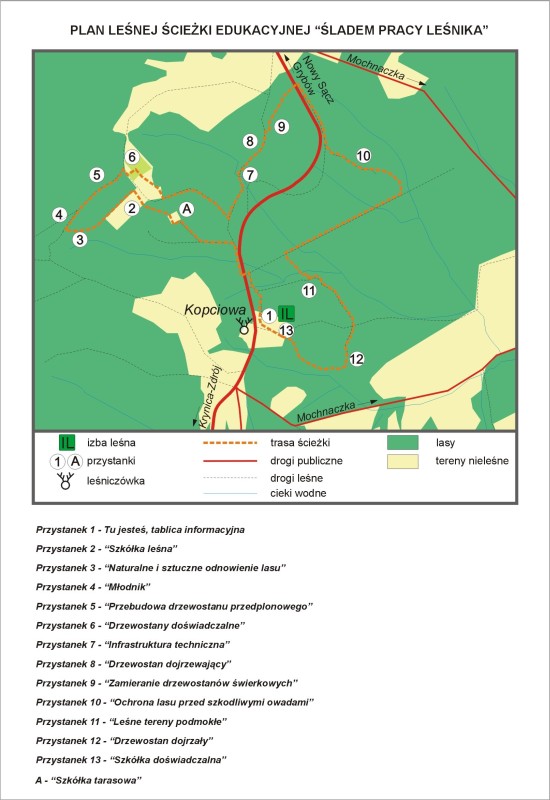
Stop no 2 – A FOREST NURSERY
An LZK Krynica forest nursery can be visited during working hours in the presence of the forester or any other LZK worker. On the board, different types of forest nurseries are characterized and methods of the production of the forest trees seedlings are presented.
Stop no 3 – THE NATURAL AND ARTIFICIAL RECONDITIONING OF THE FOREST
The board depicts different ways of formation of the young generation of the forest. Nearby, there are many clusters of self-sown fir and spruce trees of different age. With a bit of luck it is possible to see Ural Tawny Owl (Strix Uralensis) on the old fir trees. On the declining spruce trees, great spotted woodpecker and nuthatch search for food. On warm, cloudy days spotted salamanders can be seen on the ground.
Stop no 4 – AN IMMATURE FOREST STAND
The board shows the second developmental stage in a life of a forest stand. Behind the board, tight clusters of the fir and spruce immature trees emerged as the effect of a natural reconditioning. Old firs are towering over the saplings. These saplings are perfect place of shelter and rest for forest animals (deer, roe deer, wild boars) as well as they create suitable conditions for numerous forest birds to build their nests there.
Stop no 5 – THE RECONSTRUCTION OF THE FORECROP FOREST STAND
On the board we will find a piece of information about the genesis of the creation of the forecrop forest stands and about the methods of changing their content of species. After World War II 1500 hectares of LZD Krynica’ wastelands (which used to be arable lands) were afforested. After the year 1990 reconstruction of these forest stands began and every year about 500 000 seedlings of fir, beech, sycamore, ash and others were removed. Currently, there are target species planted on the majority of the area. Forester’s work here concentrates on the protection of the saplings from being grazed and damaged.
Stop no 6 – THE EXPERIMENTAL FOREST STANDS
Permanent research surfaces in the forests of LZD Krynica are an object of observation here. In the territory of LZD such surfaces where scientific experiments are carried out, have been introduced since 1966. Changes inside species and farming worth of silver fir, common beech, common spruce, European larch or common pine are evaluated there. Furthermore, on these surfaces the effects of the use of the improved thinning, of the use of the reconstruction of the forecrop forest stands and of the use of different methods of clearing are examined. On a few permanent surfaces researches regarding dendrometry, the organization of the forest, forest entomology, fitopathology and others are carried out. In the weather station microclimatic measurements have been taken for 40 years.
Stop no 7 – THE TECHNICAL INFRASTRUCTURE
The board depicts technical objects, forest lanes, constructions and buildings indispensable for the right functioning of the forest economy. The maximum use of the materials available in the forest (timber, stones, gravel) is their characteristic feature. For example, there is a XIX c. stone bridge behind the board, which was built from hewn stones without the use of cement. Behind the bridge there is a so-called ‘deal road’ which was built from the logs placed crosswise on the road and covered with the soil and gravel. In front of the bridge, by the stream, there is a wooden river bar that moderates the water flow and led to the formation of a small water basin – the place of procreation of frogs and newts.
Stop no 8 – A MATURING FOREST STAND
A fir stand after the sapling stage is characterized on the board. Clearing – a nurtural cutting which means removing from the forest stand trees that are economically undesirable – have a positive effect on the growth of the other trees (reduces the competition between the roots and the upper branches of the trees, by which it leads to the intensified growth of the thickness, height and size of the other trees). The loosening of the closeness of the treetops increases light and warmth access to the soil, which leads to the faster decomposition of the organic matter lying on the forest floor. Depending on the period of clearings, we divide them into early and late. Depending on the layer of the forest stand - there are lower and higher clearings.
Stop no 9 – THE WITHER OF THE SPRUCE STANDS
The reasons for which spruce stands weaken and wither and different methods of their reconstruction are described here. Spruces withering in groups make it easier for the sunlight to reach the bottom of the forest, which means that shrubs and herbaceous plants (raspberry and blackberry bushes) have better conditions to grow. The great amount of these berries is an excellent food base for the forest animals. Winter concentration of animals in these areas causes great damage to the forest reconditioning. In order to avoid them, foresters have to enclose the most valuable reconditioned trees or to protect their tops by painting them with chemicals.
Stop no 10 – FOREST PROTECTION AGAINST THE PERNICIOUS INSECTS
Here, the most pernicious insect species causing damage to mountain forests and methods how to fight them, are listed. Insects are the most numerous and various group of forest animals; near Krynica there are few thousands of them. Among them we can find species that are protected or included in the ‘Red List of Dying Out and Endangered Animals in Poland’. These are among others: Ground Beetles, Rosalia Longicorn, Emperor, Scarce Swallowtail, Old World Swallowtail, Clouded Apollo and numerous Bumblebee species. The forests spreading over the Tylicka Pass and the Poprad Valley constitute so-called ‘migration tract’ for many south-European species that widen the range of their occurrence this way. Near the board pheromones traps against woodworms are set and from April till June three classical spruce traps are set.
Stop no 11 – THE FOREST WETLAND AREA
There is an overgrowing inner-forest mire around the board with the description of various types of forest wetlands. Several years ago water effusion ceased, which was followed by a natural succession of trees. The level of subsoil waters has decreased considerably and water can be seen between turf after heavy rains. In such places clusters of peat-mosses occur and in less watery areas deer fern and wolf’s-foot club-moss.
Stop no 12 – A MATURE FOREST STAND
A forest stand in a final period of a forest life. The main task of the forests of Krynica is to maintain on a given terrain unchanged water, climate, soil, esthetic and landscape conditions. In order to carry out this tasks a suitable thinning (cuttings made in immature stand leading to gaining timber, to creating conditions for forest reconditioning and to providing the young generation of trees with the possibility to grow and develop) is introduced in forests. In this area so-called selection and row thinning is used.
Stop no 13 – AN EXPERIMENTAL NURSERY
The board informs about scientific experiments from the field of forest nursery and forest trees selections done by the research workers of the Forest Department. Their positive results are used in the forest economy. During fieldwork students learn the latest technologies of forest seedlings production. Here, they confront their knowledge with an economic practice.
Forest House
Located at the beginning of the educational trail, in an old converted shed from forest settlement. It consists of three rooms, where trees, herbaceous plants and animals of Beskid Sądecki are on exhibition. Part of an exhibition is devoted to forester’s work – it contains forest tools, old literature on forest, display units with wood defects and hunting trophies. next to the building, there is a collection of herbaceous plants characteristic for the forests of Krynica.
In the ‘Forest House’ classes or lectures on forestry, nature protection and ecology are held for groups of children, teenagers and adults as well. It is necessary to chose the topic and fix the date in advance. Individuals can visit ‘Forest House’ after registration at LZD in Krynica.




